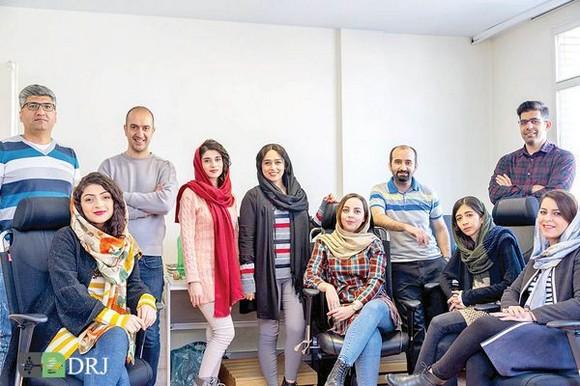Al-Kindi
Al-Kindi , “The philosopher of the Arabs” was born in Kufah before the end of the 2nd /8th century at a time when the initial flowering of the Islamic intellectual tradition had reached maturity . He was a companion of the caliphs al-Ma’mun ( d . 833 ) and his successor al-Mutasim ( d . 842 ) . He dedicated his On first philosophy to al-Mutasim whose son , Ahmad , was one of his students . Ibn Nadim attributes almost 250 titles to al-Kindi . The subjects of his works range from astrology to the manufacture of glass , jewellery , armour and perfume .
Al-Kindi also supervised the work of House of Wisdom where Greek philosophical and scientific works were translated . Al-Ma’mun had built up a library of manuscripts , the first major library to be set up since the one at Alexandria , collecting important works from Byzantium . In addition to the House of Wisdom , al-Ma’mun set up observatories in which Muslim astronomers could build on the knowledge acquired by earlier peoples .
Like so many other scholars of Islamic tradition , al-Kindi remains understudied . Out of 250 works , less than 40 are extant and even those have not been completely edited and studied . His most important known work is , of course , On first philosophy . Deeply rooted in Aristotle’s thought , al-Kindi attempted one of the first efforts to “Islamize” Greek philosophy . This process , which remained a major intellectual activity for at least three centuries produced various shades of philosophical thought in Islam; al-Kindi is usually considered to be the father of this vast effort . No doubt this effort also gained support in the Islamic ethos , especially the strong emphasis on acquisition of knowledge . Thus al-Kindi refers to the Prophetic teachings regarding knowledge and finds inspiration in the Qur’anic text which invites its readers to ponder and reflect on the signs spread out in the universe . He claims to respect the prophetic message because prophets are divinely inspired . Human knowledge depends on prolonged effort and preparation regulated according to a precise scheme , whereas God inspires the prophets , when He so desires , and without them having recourse to the methods of human knowledge , with a type of revelation condensed into a few phrases whose sense the philosopher can only explain at the cost of a lengthy process of elucidation .
Al-Kindi dealt with the whole range of Kalam questions , such as prophecy , divine unity , the creation of the body , of the atom , etc . He was well acquainted the works of Epictetus , Proclus and probably John Philoponus . He seems to have known the works of the school of Alexandria .
He adopted certain concepts from the Aristotelian tradition ( the four causes , the categories of change etc . ) and propositions ( the finiteness of the world , the impossibility of a corporeal infinitude as an act , the mechanics of intellectual perception etc . ); from the Platonist tradition , he takes speculation on the soul in its relationship with the body and with the divine light and on its ascent to and beyond the heavens .
Al-Kindi , however , does not follow the Greeks where they are in disagreement with the Qur’anic text , for example , with regard to the creation , and the life-span of the Universe . Thus , in his On first philosophy , one finds a kind of philosophical tawhid .
The scientific work of al-Kindi follow the same scheme as his philosophical work . He refines and further develops the works of the ancient scholars in the light of new interests . He wrote essays on Euclid , Archimedes , Ptolemy , on the astrolabe and on Hippocratic medicine; he also drew to a considerable extent on Asiatic sources , particularly for his knowledge of remedies . He made original contributions in the fields of optics and pharmacology . His article on perspective ( known only in Latin under the title De causis diversitatum aspectus ) contains an advance theory which is not totally Euclidean . He sets out three points in succession: the rectilinear propagation of light which Euclid postulated and which al-Kindi demonstrates; a theory of vision whereby the eye illuminates the object seen--this also is a Euclidean theory which al-Kindi modifies , giving three dimensions to the rays emitted by the eye ( whereas for Euclid these were geometric lines ); finally , a theory of mirrors which is a criticism and a completion of what Anthemios of Tralles had written on this subject .
The same method is used in the treatise On compound medicines . The ancients had studied the proportions of the four qualities ( hot , cold , dry , wet ) in simple medicines . Al-Kindi extended his method to compound medicines and explained mathematically the relation between increasing the number of parts of each quality , and the corresponding increase in the potency of the medicine on the organism .
Al-Kindi viewed natural sciences as part of the broader sphere of knowledge which is attainable by human beings through hard work . His role , as the “Philosopher of the Arabs” was neither to justify acquisition of sciences , nor to defend his position; he simply tried to harmonize Greek philosophy with his faith .
Al-Kindi’s works were systematically listed in the Fihrist .
The Works of Al-Kindi
There has been no attempt to establish the chronological order of Al-Kindi’s works . He lists a series of his writings which he considers necessary for the understanding of his work on The Great Art ( al-Sina ah alUzmah ) They are:
1 . Kitab fi ‘l-`lm l( ? ) . Probably Risalah fi i l-Mu tayat ( On the Data ) based on Euclid s Dedomena .
2 . On the Sphere and the Solids and Immediate Primary Plain ( Figures ) the Knowledge of which is connected with that of the Sphere ( R . fi l-Kurah wa ma ittasala Ilmuhu bi Ilmiha min l-Mujassamat wa Awa it Qaribah min al-Basitah ) .
3 . On the Motions of ths Sphere ( K . fi Harakat alKurah ) .
4 . On Places ( K . fi l-Masakin )
5 . On Optics ( K . ft l-Manazir )
6 . Introduction to Arithmetic ( K . al-Madkhal ila l Adad )
7 . On the Use of Analogical Arithmetic ( K . fi Isti mal alAdad al-Qiyasi )
8 . On the Use of the Indian Numerals ( K . fi Isti mal alAdad al-Hindi )
9 . On the Purposes of the Use of the Indian Numerals ( Limmiryyat( ? )Isti mal alAdad al-Hindi )
10 . On Spheres ( K . fi l-Ukar )
11 . On the ‘Introduced First Philosophy ( K . fi l-Falsafah al-Ula al-Dakhilah ) .
I—Philosophy
1 . On First Philosophy ( Kitab al-Kindi ila l-Mu tasim bi llah fi l-Falsafah al-Ula ) .
Published in Rasa il , 1: 97-162; also published separately with some variants by Ahmad Fu ad al-Ahwani , Cairo , 1948 . A translation into English and commentary is being prepared by Richard Walzer of the University of Oxford . See Ritter-Plessner 23; GALS , 1: 373; Philosophie 7 . This work is mentioned in al-Fihrist ( p . 357 ) , under the same title . The book , as the title indicates , was addressed to al-Mu tasim . The phrase first philosophy is an adaptation of the Aristotelian term that describes the study of being qua being as the first science . It is the study , according to al-Kindi , of the immovable eternal substance , the first substance in the order of things which deserve nothing less than the first science .
The book probably has not reached us in its complete form . We have only four chapters , which deal respectively with the following problems: philosophy , its meaning and uses; being and its categories; the First Cause and the efficient cause; oneness in reality and metaphor . In the first chapter , we have a definition and a defence of philosophy against those theologians who pretend lo maintain that there is an irreconcilable discrepancy between reason and revelation . The second chapter establishes the nature and scope of physics and metaphysics . The former is described as the science of that which undergoes change and movement , or the study of the particulars . The latter is considered as the science of the intelligible and the immovable , or the study , of the universals . This is followed by a discussion on the finite and the infinite . Al-Kindi proves that there is nothing infinite except God . Time , space and movement are finite , one and all . The third chapter deals with the necessity of a First Cause , and the impossibility of its being material . The First Cause in one and simple , whereas material causes are composite no matter how we consider them . The last chapter is devoted to a discussion of the problem of Unity . Unity is attributed to things other than God equivocally . The true one does not belong to any genus as such , it is a “genus” by itself . It is eternal , it cannot be one in relation to any other than itself .
2 . “On Introduced Philosophy and Logical and Abtruse Problems and Metaphysics”
3 . “That Philosophy Cannot be Attained except by the Science of Mathematics . ”
4 . “Exhortations to Study Philosophy”
5 . “On the Number of Aristotle s Books and What is Required for the Study of Philosophy”
6 . “On the Purposes of Aristotle in his Categories”
7 . “On the Nature of Science and its Classification”
8 . “The Classification of the Human Sciences”
9 . “His Major Treatise on his Scientific Rule”
10 . His Short Treatise on his Scientific Rule ( K . Risalatuhu l-Sughra fi Miqyasihi lIlmi ) .
11 . On that the Actions of the Creator are all Just , and are Exempt from Injustice ( Fi anna Af al l-Bari kulluha Adl la Jawr fiha ) .
12 . On the Nature of That Which Can Never Be Infinite and That Which Is Said To Be Infinite ( R . . fi Ma . iyyat ma la yumkin an yakuna la Nihayat lahu wa ma lladhi yuqalu la Nihayat lahu ) . Published in Rasa il , I: 194-98 . See Ritter-Plessner , 25 . AI-Kindi basing his arguments on evident mathematical propositions , proves that an infinite body cannot actually exist . He also proves the same concerning motion and time . Infinity outside of God can only exist in potentiality but never in actuality .
13 . On the Explanation that the Body of the World cannot Possibly be Infinite , and that it is only so in Potentiality ( K fi l-Ibanah annahu id yumkin an yakuna Jirm l Alam bila Nihayah , wa anna dhalika innama huwa fi l-Quwa ) .
14 . On Action and Passion from the First ( Book ) of Physics ( K . fi l-Fa ilah wa l-Munfa ilah min l-Tab iyyat al-Ula )
15 . On the Dictions of Comprehensive Ideas ( K . f i lbarUl al-JawZmi al-Fikrlyah )
16 . On Certain Questions He was asked to Answer on the Usefulness of Mathematics ( K . fi MasZ il su ila
anha fi Manfa at nr-airad~uat ) . .
17 . On Discussing the Allegation that Natural Objects Do Only One Kind of Action by Natural Necessity ( K . fi BahtJi Q?wl al . Muddu i anna al-Ashya . alTab lyyah taf alu fi lan Wahidan bi-ljab al Khulqah ) .
18 . On the Primary Data of Sensible Objects
19 . On the Apposition of the Arts
20 . On How to Petition Caliphs and Ministers
21 . On the Division of the Law
22 . De Intellectu
23 . “On the True First Perfect Agent and On the Imperfect One Which is said to be an Agent by Metaphor”
24 . “On Cause and Effect Written for al-Ma’mun”
25 . “The Book of the Apple”
26 . De Quinque Essentiis
27 . “On the Explanation of the Active Proximate Cause of Generation and Corruption”
28 . “On Conjuring up Spirits”
29 . “On the Definition of Things and their Descriptions”
30 . “On the Uniqueness of God and the Finitude of the Body of the Universe”
31 . “A Philosophical Treatise on the Secrets of Spiritual Bodies”
32 . “Refutation of the Christians”
33 . “That There Exist Substances without Bodies”II Logic
34 . “A Summary of Porphyry’s Eisagoge
35 . “An Exhaustive Introduction to Logic”
36 . “Liber Introductorius in Artem Logicae Demonstrationis”
37 . “On the Ten Categories”
38 . “On Explaining Ptolemy’s Commentary at the Beginning of Almagest Regarding What Aristotle Said in His Analytics”
39 . How to Guard Against Sophistical Devices
40 . On the Five Voices
41 . On the Construction of an Instrument that extracts General ( Notions]
III Arithmetic
42 . An Introduction to Arithmetic ( R . fi l-Madkhal ila l-Aritmatiqi )
43 . On the Use of Indian Numerals ( R . fi Isti malal Hisab al Hindi )
44 . On Explanation of the Numbers Mentioned by Plato in his Politics ( R . fi l-Ibanah an al-A dad allati dhakarah Aflatun fi l-Siyasah )
45 . On the Harmony of Numbers ( R . fi Ta lif al-A dad )
46 . On Unity from the Point of View of Numbers ( R . fi 1-Tawhid min Jihat al-A dad ) .
47 . On Elucidating the Implied Numbers
48 . “On Prediction [by the flight of birds] and Augury from the point of view of Numbers”
49 . “On Lines and Multiplication with a Number of Barley-corns . ”
50 . “On Relative Quantity”
51 . “On Measuring of Proportions and Times”
52 “On Numerical Devices and the Art of Their Concealment”
IV – Spherics
53 . “On that the world and all that is therein are spherical in shape”
54 . “That the simple elements and the outermost body are spherical in shape”
55 . “On that the sphere is the greatest of the solid figures , and the circle the greatest of all the simple ( Plain ) figures”
56 . “On spherics”
57 . “On the construction of an azimuth on a sphere”
58 . “On that the surface of the water of the sea is spherical”
59 . “On How to level a sphere”
60 . “On how to make and use a six-ring armillary”
V – Music
VIAstronomy
69 . “On that the astronomical observation of the new moon cannot be determined with absolute exactness . ”
70 . “Answers to questions on the states of the planets”
71 . “Solutions of Physical Problems on some sidereal qualities”
72 . “On Projection of the rays”
73 . “On the Two Seasons ( Summer and Winter )
74 . “On that to every country is attributed a different sign of the zodiac and a different planet . ”
75 . “on requests to explain the difference in the forms of nativity”
76 . “On what is reported concerning the longevity of the ancients and its being otherwise nowadays”
77 . “On the Correct way to construct a horoscope model , a hilaj , and a kathkuda”
78 . “On the explanation of the cause of the retrograde motion of the planets . ”
79 . “On the explanation of the difference among the heavenly bodies . ”
VII – Geometry
93 . On the Objectives of Euclid’s Book
94 . On the Improvement of Euclid’s Book
95 . De Aspectibus
96 . On the reason why the ancients ascribed the five geometrical figures to the elements
97 . On the approximate calculation of Archemides’ Theory on the magnitude of a diameter , known from its circumference .
98 . On the construction of the figure of the middle lines
99 . On the Approximate computation of a circle’s table of chords .
100 . On the approximate calculation of the chord of an arc of a ninth of a circle
VIII – The Heavenly Spheres
120 . On the Impossibility of finding the area of the outermost sphere governing the rest of the spheres .
121 On the Exposition that the nature of the heavens is contrary to that of the four elements .
122 On the Heavenly Phenomena
123 On the Ultimate World
IX – Medicine
139 . On Hippocratic Medicine
140 On Fatal foods and medicines
141 On the fumes that purify the air from pestilence
142 On the Medicines that cure from obnoxious smells
143 On the Purging effects of medicines and the reactions of bodily humours
144 On Hemoptesis
145 On antidotes of poisons
146 On the care of healthy persons
147 On the cause of delirium in acute illnesses
148 On elucidating the nature of the principal organ in the human body and the explanation of intelligence
149 On the quality of the brain
150 On leprosy and its cures
151 On rabies
152 On the fits resulting from phlegm and the cause of sudden death
166 De Medicinarum Compositarum Grabidus Investigandis LibellusX – Astrology
XI – The Polemic Writings
XII – Psychology
XIII – Politics
XIV – Meteorology
212 On the Cause about which it is said that fire , air , water and earth are elements binding together all things subject to generation and corruption
216 On the reason why the upper part of the atmosphere remains cool whereas the part nearer to the earth remains warm
217 On the sign that appears in the sky and is called a planet
218 On comets
219 On a planet that appeared in the sky and was observed for several days until its disappearance
XV – Magnitudes
223 On the Magnitude of the distances between the seven climes
224 On habitations as seen from various parts of the globe
225 His great treatise of the inhabited quarter
226 On the magnitudes of the heavenly bodies
227 On the calculation of the distance between the centre of the moon and the earth
228 On the construction of an instrument to calculate the magnitudes of the distances between the heavenly bodies .
229 On the construction of an instrument to calculate the magnitudes of observed objects
230 How to calculate distances between an observer and the tops of the mountains and how to calculate the heights of mountains .
231 On the measurement of distances between stars by the use of Dhat al-Shu’batayn
XVI – Divination
232
235
XVIIMiscellaneous
236
270













































